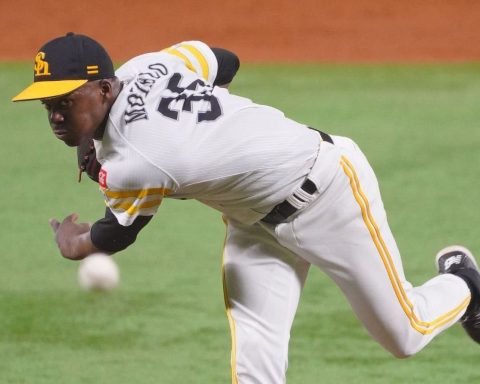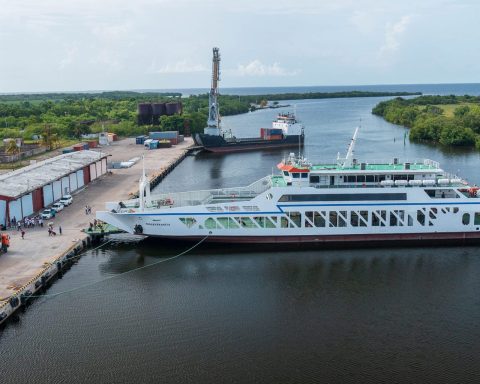HAVANA, Cuba.- The two emblematic dates of the Cuban Revolution Fidel Castro They are January 1, to commemorate their triumph in 1959, and July 26, which commemorates the failed assault on the Moncada Barracks in 1953.
Since taking power, Fidel Castro has organized grandiose celebrations to commemorate July 26, with the aim of giving the world an image of popular support for his regime.
In 1959, for the central act of the first celebration of July 26, the then called Civic Plaza was chosen, later renamed Revolution Square, where a rally of peasants from all over the country would be held to demonstrate the unity of the inhabitants of the countryside and the city.
The cost of the celebration was estimated at three million pesos. Since the State was not in a position to meet such expenses, the support of the population was requested to provide temporary shelter and food to the thousands of peasants who came to the capital.
All the peasants who participated in the event had to wear guayaberas and a yarey hat with a Cuban flag on its front brim to commemorate the mambises.
People from the interior of the country began to arrive on July 13. The first was a young man from Las Tunas, Eduardo Rivas Morales, who said he wanted to be one of the first because of the great excitement he felt.
Fidel, who studied on July 15 where the tribune would be located, discarded the large platform of the monument to José Martí, and determined that it would be on the terrace of the National Library. This would protect his back, since the Library building behind him has 18 floors.
Parallel to the preparations for the celebration of July 26, an event occurred that served to give more impetus to the spectacle that Fidel Castro was preparing.
Fidel’s disagreements with the president Manuel Urrutia —who had been appointed by him after the triumph of the revolution and who did not share the inclination towards communism that the Government was taking— led to Fidel resigning from the post of Prime Minister on July 17 and saying that he would later explain to the people the reasons for his decision.
It was a shrewd move by Fidel Castro, who calculated that with overwhelming popular support, the vast majority of citizens would oppose his decision to resign.
At dusk on the 17th, Fidel arrived at the CMQThe journalists were waiting for his arrival at the door on M Street, but he entered through the door on 23rd Street and went to studio No. 1, accompanied by Raúl Castro, Ramiro Valdés, Camilo Cienfuegos and other members of the Government and the army.
At the beginning of his lengthy speech at 8:00 pm, he clarified that resigning from his position due to his disagreements with the president did not mean he was giving up “fulfilling his duty.”
If we analyze these words carefully, a contradiction can be seen, since without the position, it was impossible to remain in power and fulfill the commitments made.
Urrutia, who was in the Presidential palace Together with the Council of Ministers, he immediately requested his resignation from the presidency and took asylum in the Venezuelan embassy in Havana.
For the vacant post of president was appointed Osvaldo Dorticos Torrado. Something that was clearly thought out in advance. It would be the first time in the history of Cuba that the highest magistracy was appointed in such a short time: fifteen minutes.
In the days leading up to July 26, there were a number of events in support of Fidel Castro. Although he did not appear in public or clarify whether or not he was resigning from the post of prime minister, the masses continued to demand that he return to office.
On July 26, the Council of Ministers moved at 5:15 am to the Moncada Barracksin Santiago de Cuba, to commemorate the time when the attack on that fortress began in 1953.
In Havana there was a parade of the Revolutionary Armed Forces along the Paseo del Prado, and then a simulated attack on a ship on the Malecón, in front of Maceo Park, under Fidel’s direction.
At four in the afternoon the central event began in the Plaza, presided over by Fidel who, with his four-hour speech, always improvised, fascinated the audience.
During the ceremony, the new president, Dorticós, said: “For the first time in the history of our Revolution, it is not Fidel Castro who rules, it is the people who order Fidel Castro to fulfill his duty as a ruler.”
Through this spectacle, worthy of a great theatrical production, the Commander in Chief returned to power, a position he held unscathed until the end of his days.
OPINION ARTICLE
The opinions expressed in this article are the sole responsibility of the person issuing them and do not necessarily represent the opinion of CubaNet.
Follow our channel WhatsApp. Receive the information from CubaNet on your cell phone through Telegram.
















